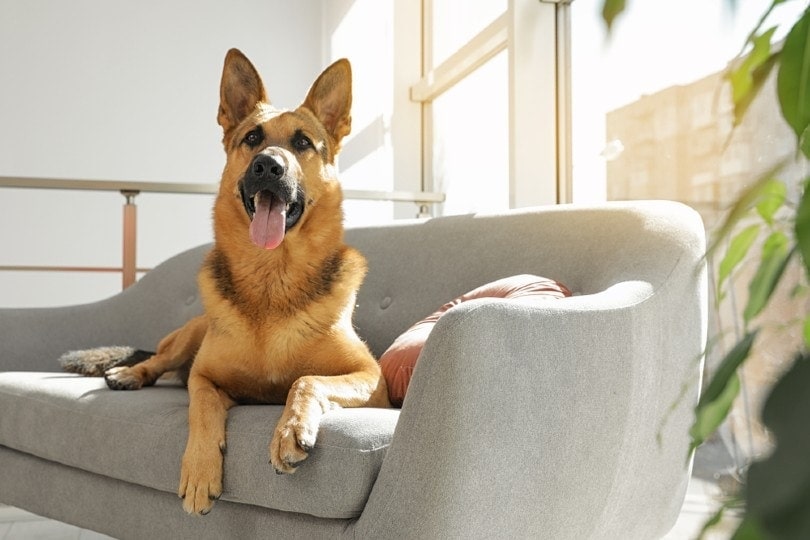Pitbull vs. Bulldog: What Are the Differences?

Updated on
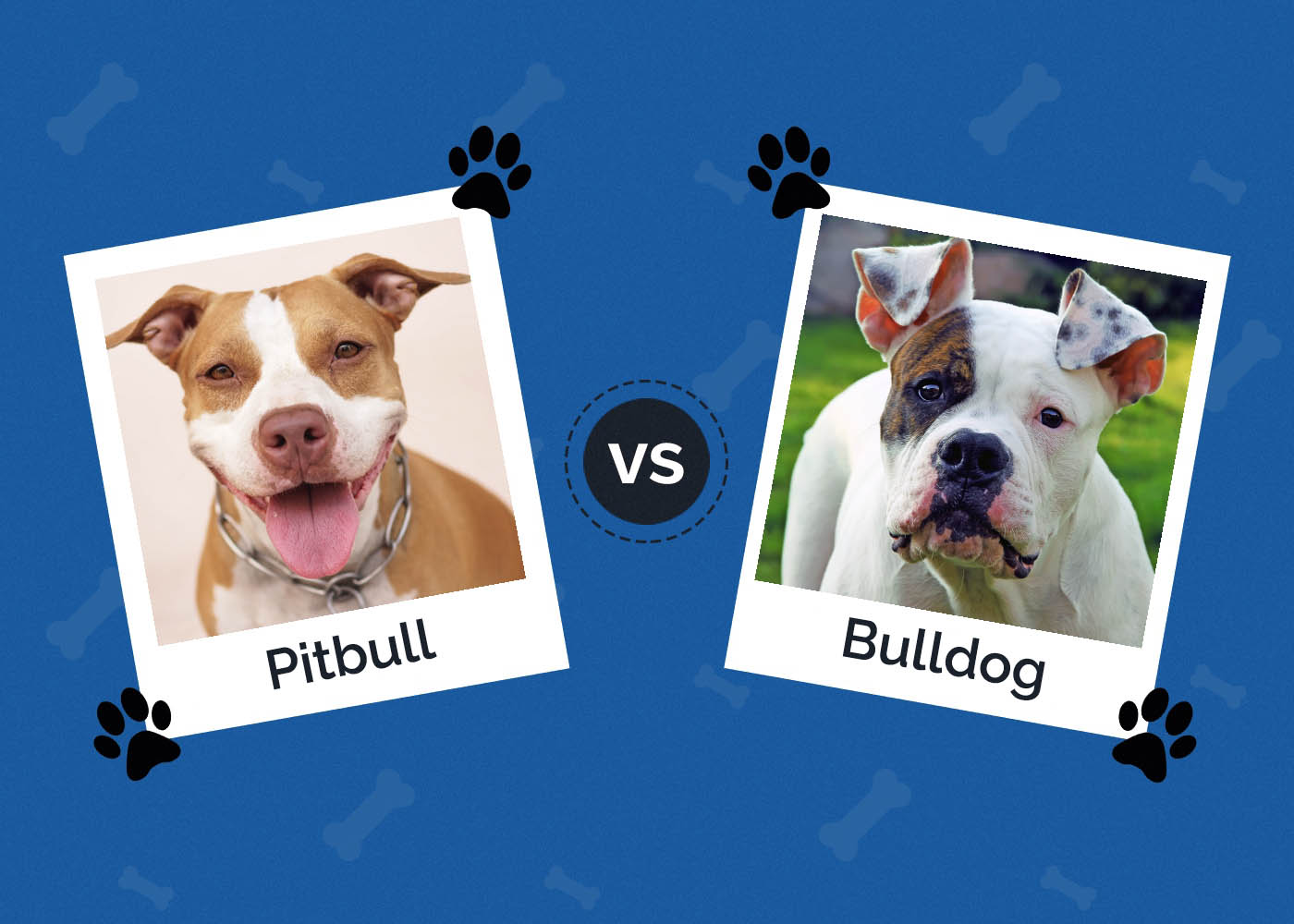
When it comes to cases of mistaken identity, no dog has it harder than the Pit Bull. These pups are confused for all manner of other breeds, from Boxers to Cane Corsos.
One of the most common breeds often mistaken for Pit Bulls, however, is the Bulldog. In the article below, we’ll show you how to tell the two apart so that you never have to be confused again.
Visual Differences

A Quick Overview – Pitbull vs. Bulldog
Does the common ancestor bring about common traits? We’ve got a quick overview of the two breeds below.
- Average Height (adult): 19 inches
- Average Weight (adult): 50 pounds
- Lifespan: 13 years
- Exercise: High needs
- Grooming needs: Low
- Family-friendly: Yes
- Dog-friendly: Prone to aggression
- Trainability: Difficult & necessary
- Average Height (adult): 12-15 inches
- Average Weight (adult): 40-50 pounds
- Lifespan: 8-12 years
- Exercise: 20 min/day
- Grooming needs: Low
- Family-friendly: Yes
- Dog-friendly: Sometimes; socialize early
- Trainability: Moderate
What Is a Pit Bull, Exactly?
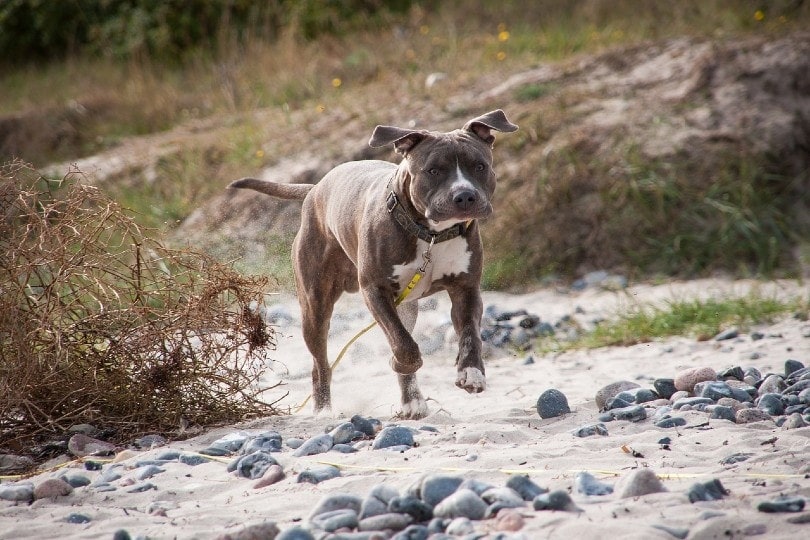
Before we can tell you the differences between the breeds, we have to define them first.
The fact is, there is no such thing as a “Pit Bull” — meaning, it’s not a recognized breed. There is a breed known as the American Pit Bull Terrier, but that’s not the only dog that gets labeled a Pit Bull.
Instead, the name is often used as a catch-all term for any manner of breeds, including Staffordshire Terriers, American Bulldogs, and Staffordshire Bull Terriers. Typically, what people mean when they say “Pit Bull” is a dog with a boxy head and muscular body.
What Is a Bulldog?
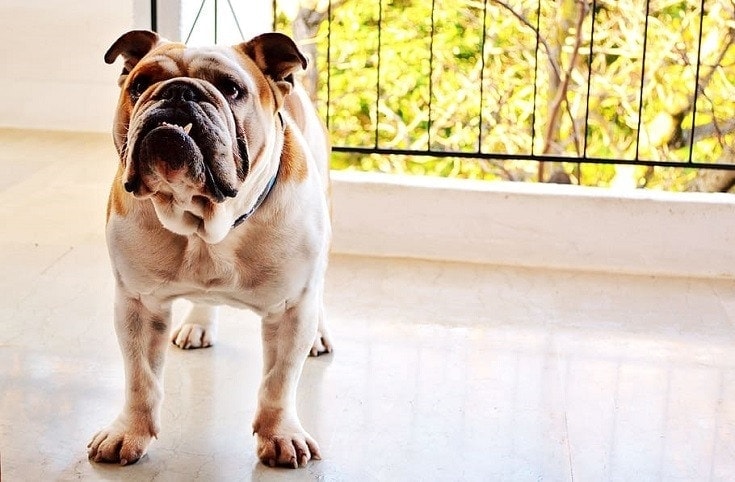
There are several different types of Bulldog, including English Bulldogs, Olde English Bulldogges, American Bulldogs, and French Bulldogs. However, there’s quite a bit of variation within the breeds (and nobody is going to mistake a French Bulldog for a Pit Bull).
The other three breeds can often get confused for other Pit Bull-style dogs, but it’s mostly American Bulldogs that get lumped in.
So, in the interests of fairness, we’ll use American Pit Bull Terriers and American Bulldogs for our comparisons.
Size
The size of the breeds is the easiest way to tell them apart. Simply put, American Bulldogs are much larger than American Pit Bull Terriers.
American Bullies can grow to be as big as 125 pounds and stand as tall as 27 inches at the shoulder. These are big, broad, imposing animals.
American Pit Bulls, on the other hand, are medium-sized pooches, often tipping the scales at around 60 pounds. They’re quite a bit shorter, too, measuring only about 20 inches at the shoulder.
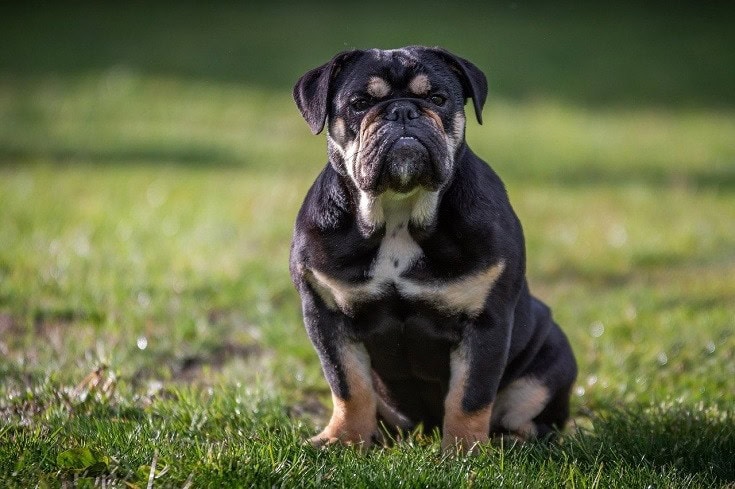
Appearance
One of the telltale signs of a Bulldog (any Bulldog, really) is a wrinkly face. While American Bulldogs aren’t quite as smushy-faced as their British cousins, they still have quite a bit of excess skin around the face and neck.
American Pit Bulls are descended from terriers, not Bulldogs, and their skin is pulled much tauter.
The nose is another clear indicator of the dog’s lineage. An American Bully’s nose is going to be shorter than his skull, so while it won’t be quite as stubby as an English Bulldog’s, it’s still not a complete snout. American Pit Bulls have noses that are as long or longer than their heads, giving them a more traditionally “dog-like” appearance.
Temperament
Both dogs have something of a bad rap in this department, and it’s largely undeserved. Having said that, though, it’s essential that you train and socialize them as much as possible.
Like all Bulldogs, American Bulldogs are goofy and playful, but with a strong, stubborn streak. They’re not prone to aggression, but they won’t just defer to you because you’re the human, either. You’ll need to train them extensively, using lots of positive reinforcement — but be careful, because they’re masters at extorting treats.
American Pit Bull Terriers are just as loving, and they tend to be a bit clingy. Basically, they’re an overgrown lapdog (also, they’ll take any opportunity available to lick your face). However, they’re much bigger people-pleasers, so you may be able to train them using just praise and affection.
If socialized properly, both should be open and welcoming to people, and great around children. Both breeds can have issues with other dogs and pets, though, so you may be better off keeping a one-dog household if you adopt either one.
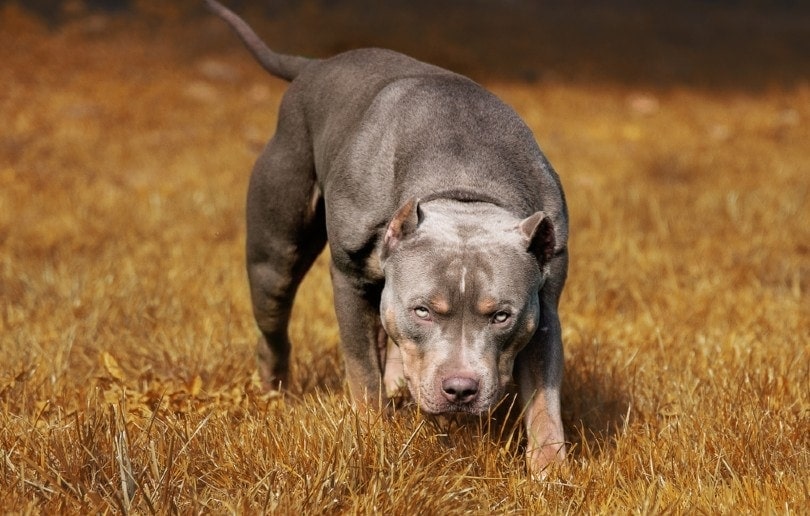
Health
Both have lifespans in the 10-15 year range, and both are prone to suffering from joint-related issues like hip dysplasia later in life.
Pit Bulls are notorious for having allergies and other skin conditions, so you may need to bathe and treat your pup regularly. You’ll also likely have to do some trial-and-error to eliminate triggers.
Bullies love to eat, so keeping their weight under control is essential. They’re also prone to thyroid conditions and certain types of cancer.
Overall, both breeds are about equally healthy.
Grooming Requirements
Neither of these dogs is especially high-maintenance, as both have short coats that don’t shed excessively. You shouldn’t need to bathe them very often, either, as neither breed tends to smell.
If you adopt a Bully, you’ll need to keep the skin folds on their face clean, as bacteria can grow in there and lead to infection. Pit Bulls, on the other hand, will need any skin conditions they have managed regularly.
Cost of Ownership
You shouldn’t need to pay much out-of-pocket to adopt either breed, as they’re both readily available. This is especially true for Pit Bulls, as most animal shelters are full of them.
Medical costs should be roughly the same over the life of the animal, as they’re prone to the same issues. You may have increased insurance premiums to deal with too, regardless of which breed you pick.
Food is one area where the cost of ownership may diverge drastically, though. Bullies weigh twice as much as Pit Bulls, and so it’s more expensive to feed them. You may also need to buy special food regardless of which breed you adopt, as Pit Bulls often have food allergies, and Bullies may need a weight-control formula.
Pitbull vs. Bulldog – Which Should You Pick?
Despite all the differences we’ve cataloged here, these breeds are very similar, and you’ll likely be happy regardless of which one you choose. Pit Bulls are easier to find and slightly cheaper to own, but the difference is negligible.
And while you may be tempted to pick an American Bulldog to avoid the stigma that goes with Pit Bull ownership, you should realize that most people will think you have a Pit Bull anyway, so it likely doesn’t matter.
The good news is that, if you’re a responsible owner, when it comes to a Pitbull versus Bulldog, either dog will make an absolutely incredible pet, so you can do your part to help eliminate the stigma.
Featured Image Credit: (L) Natthapot Chantaraviboon, Shutterstock | (R) Little Moon, Shutterstock







